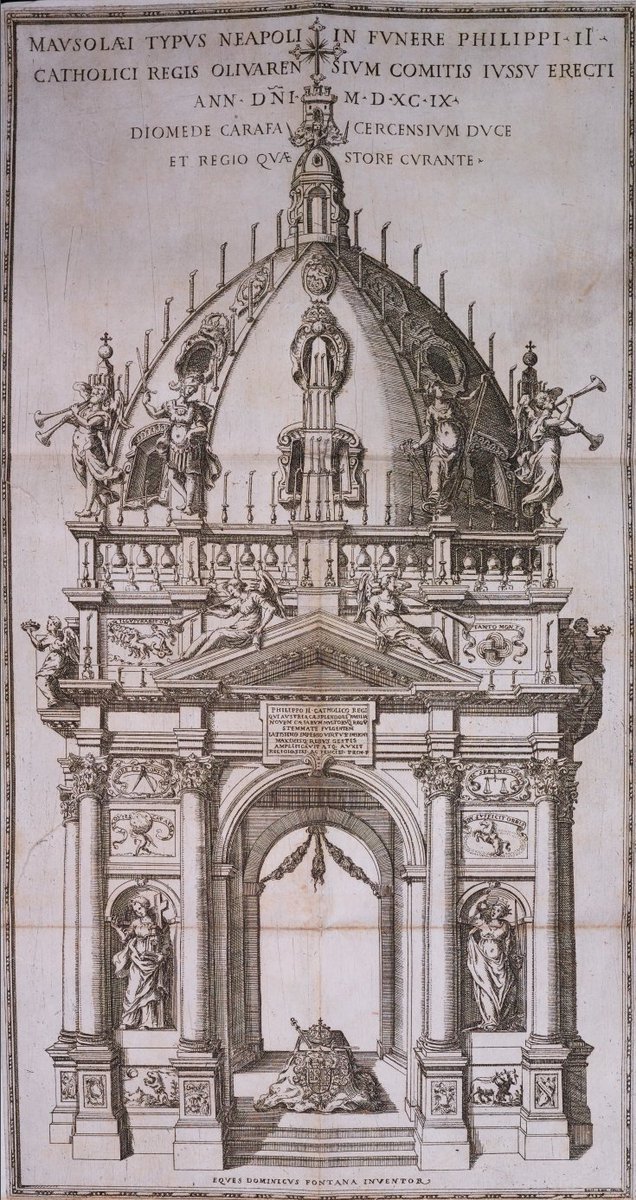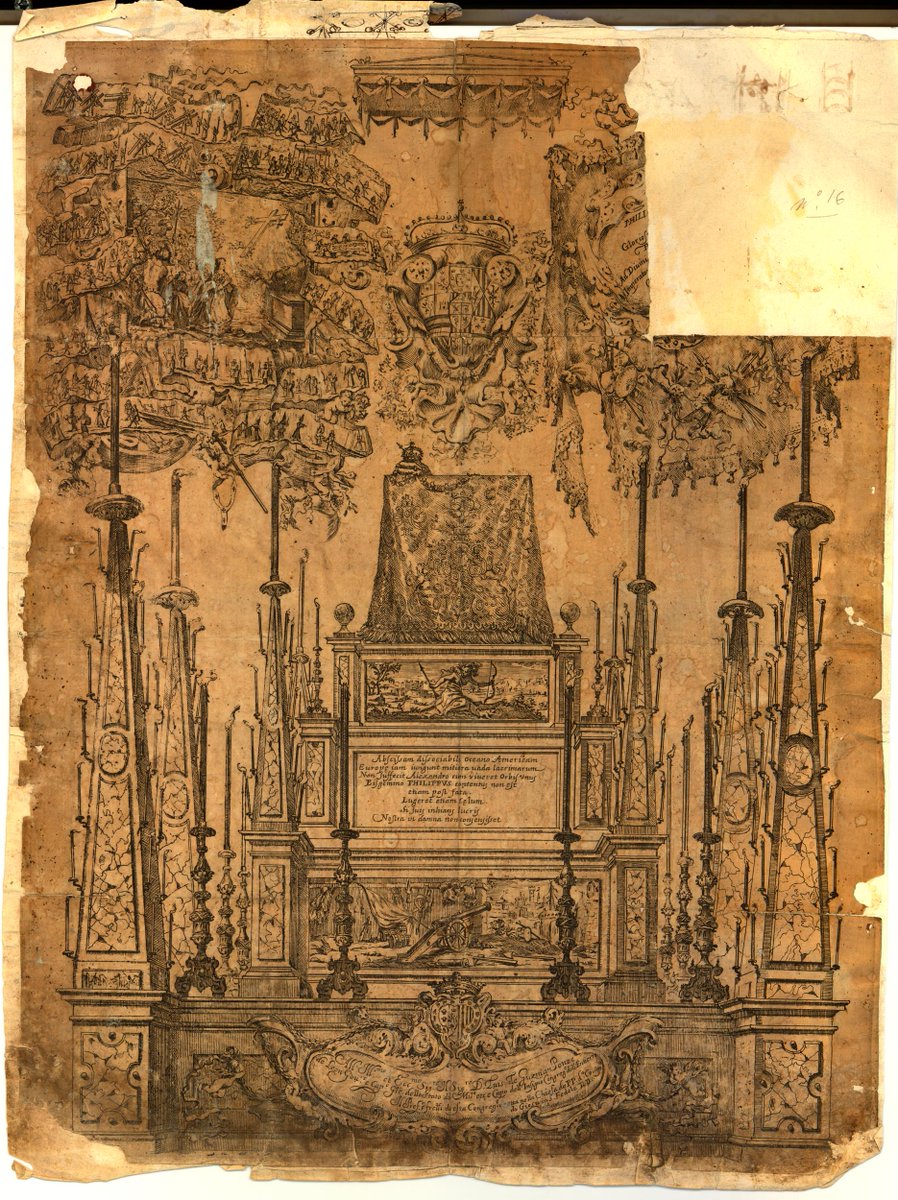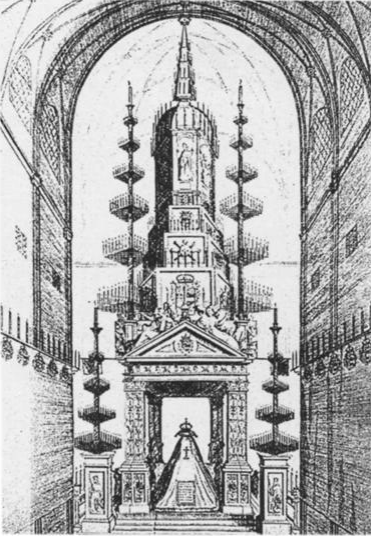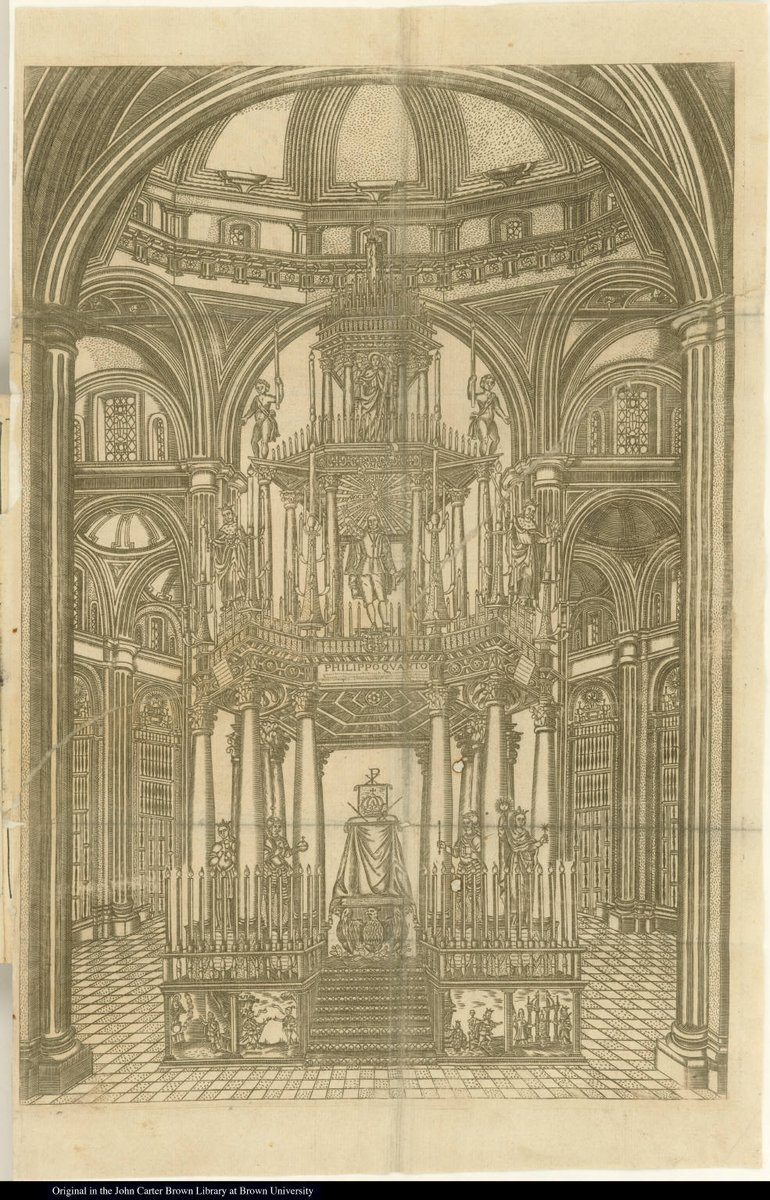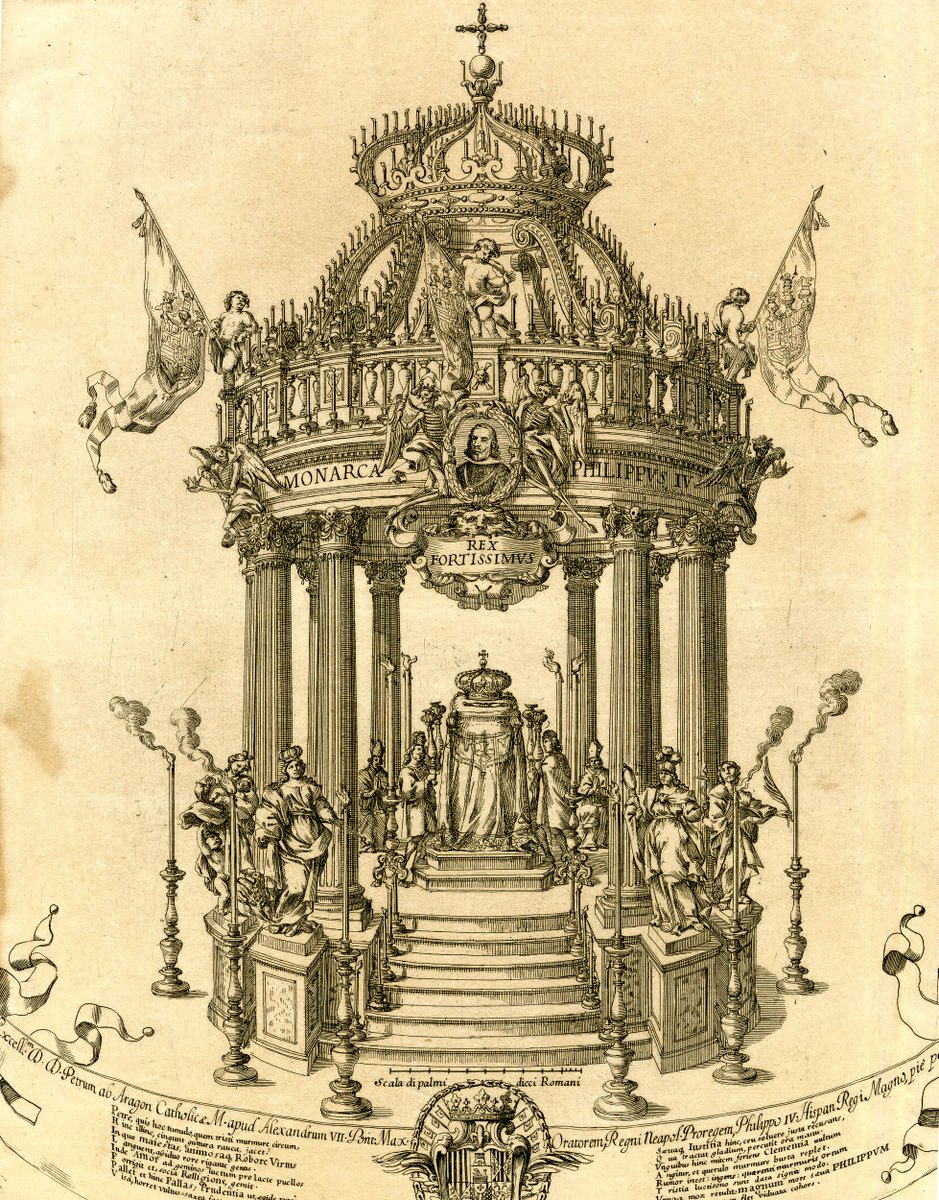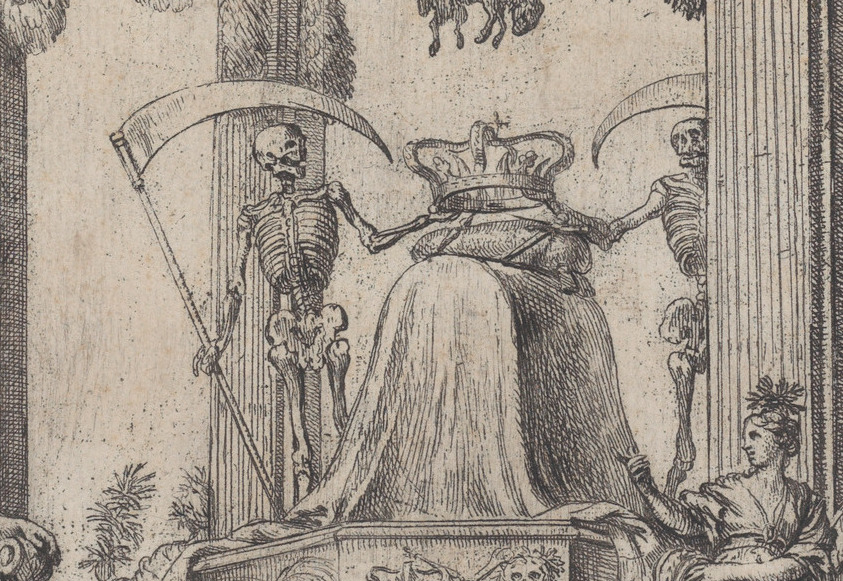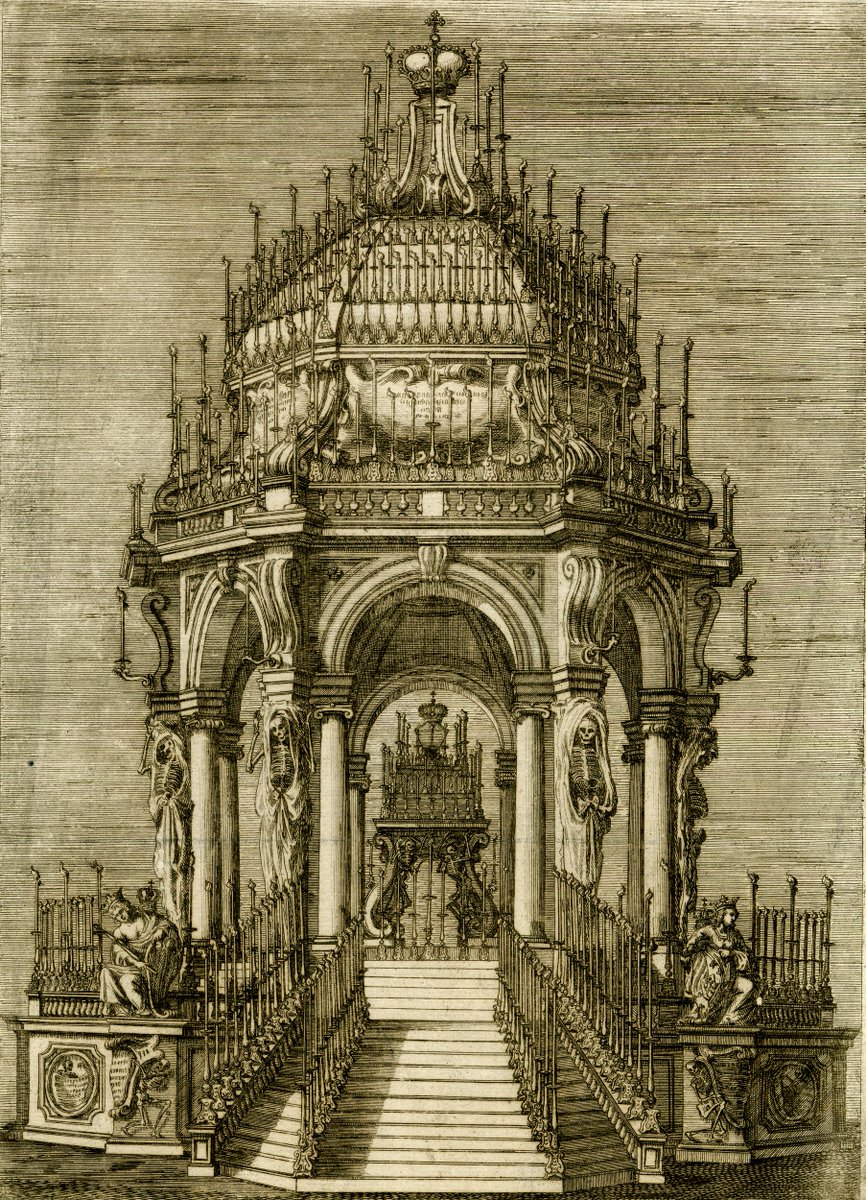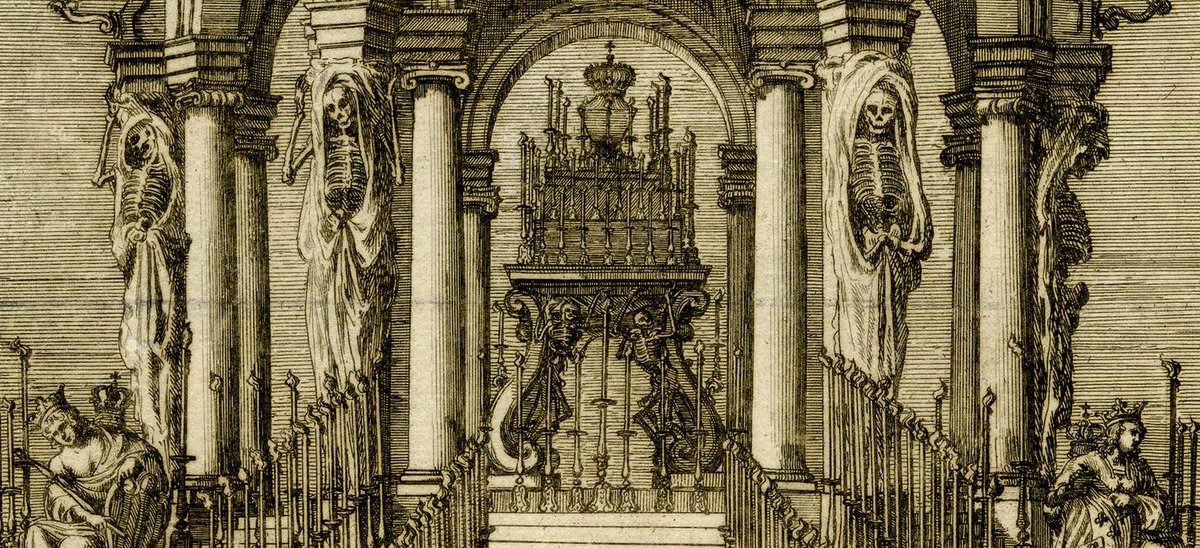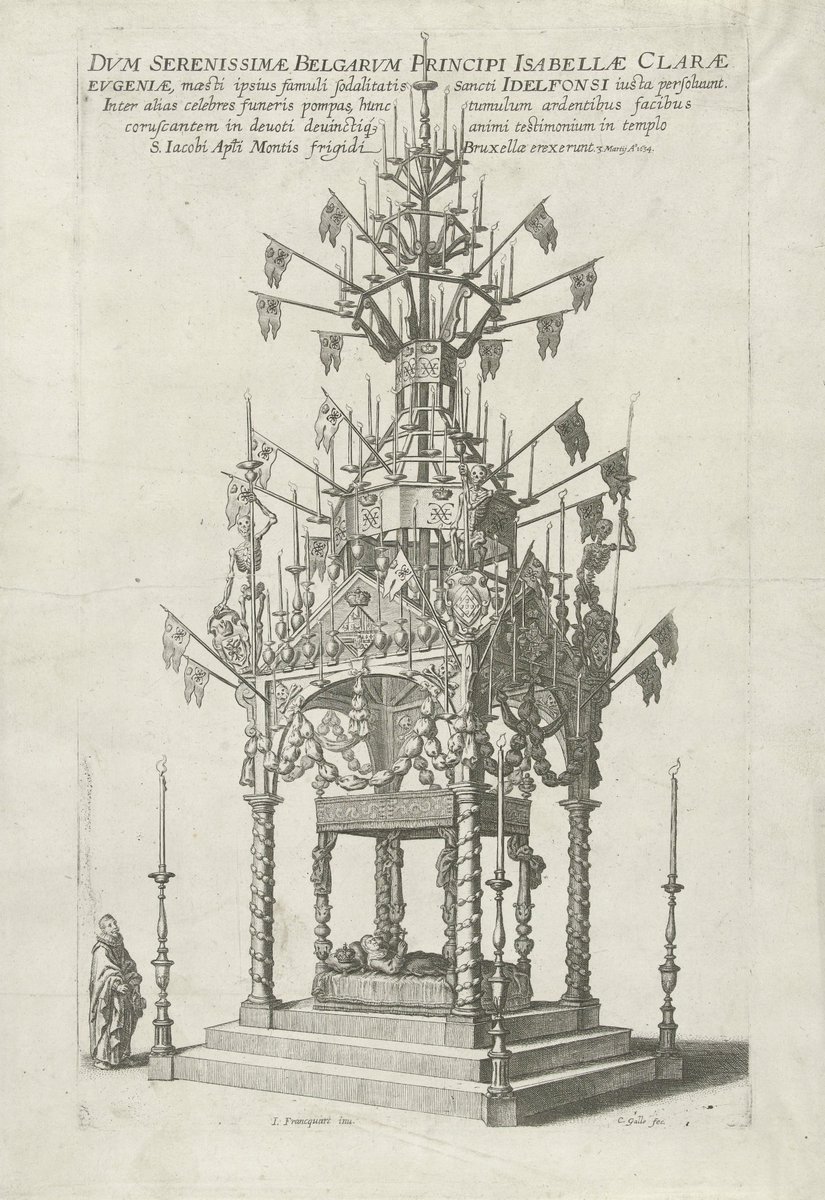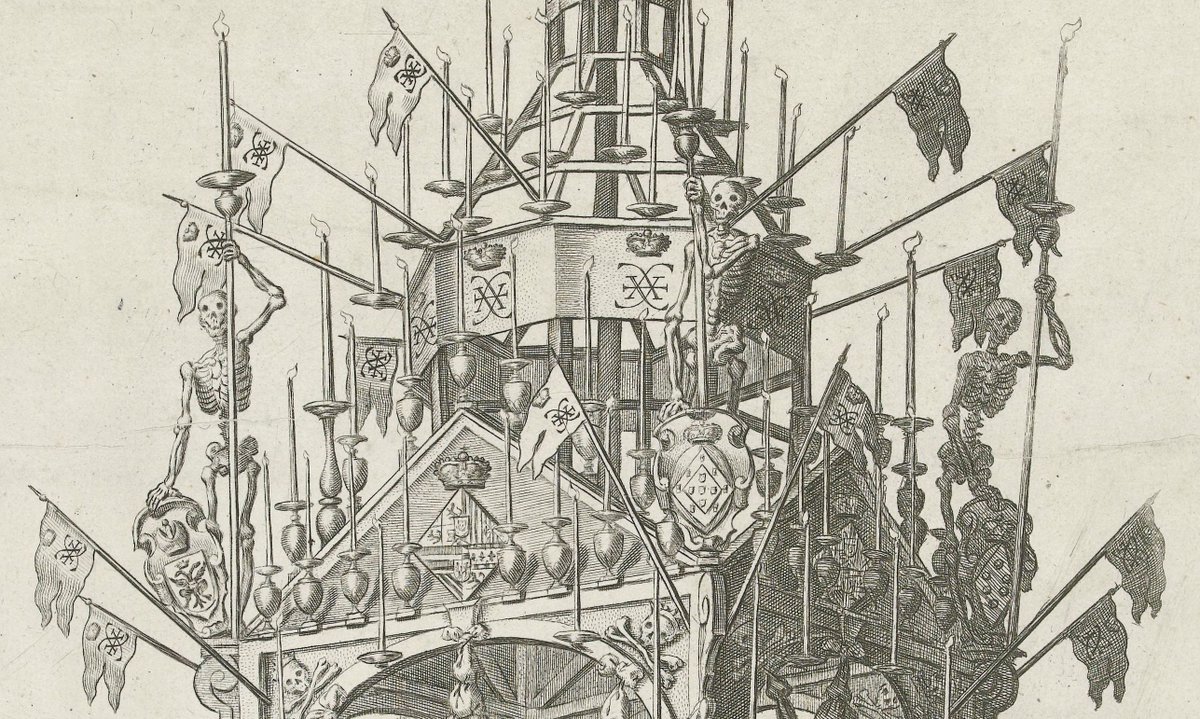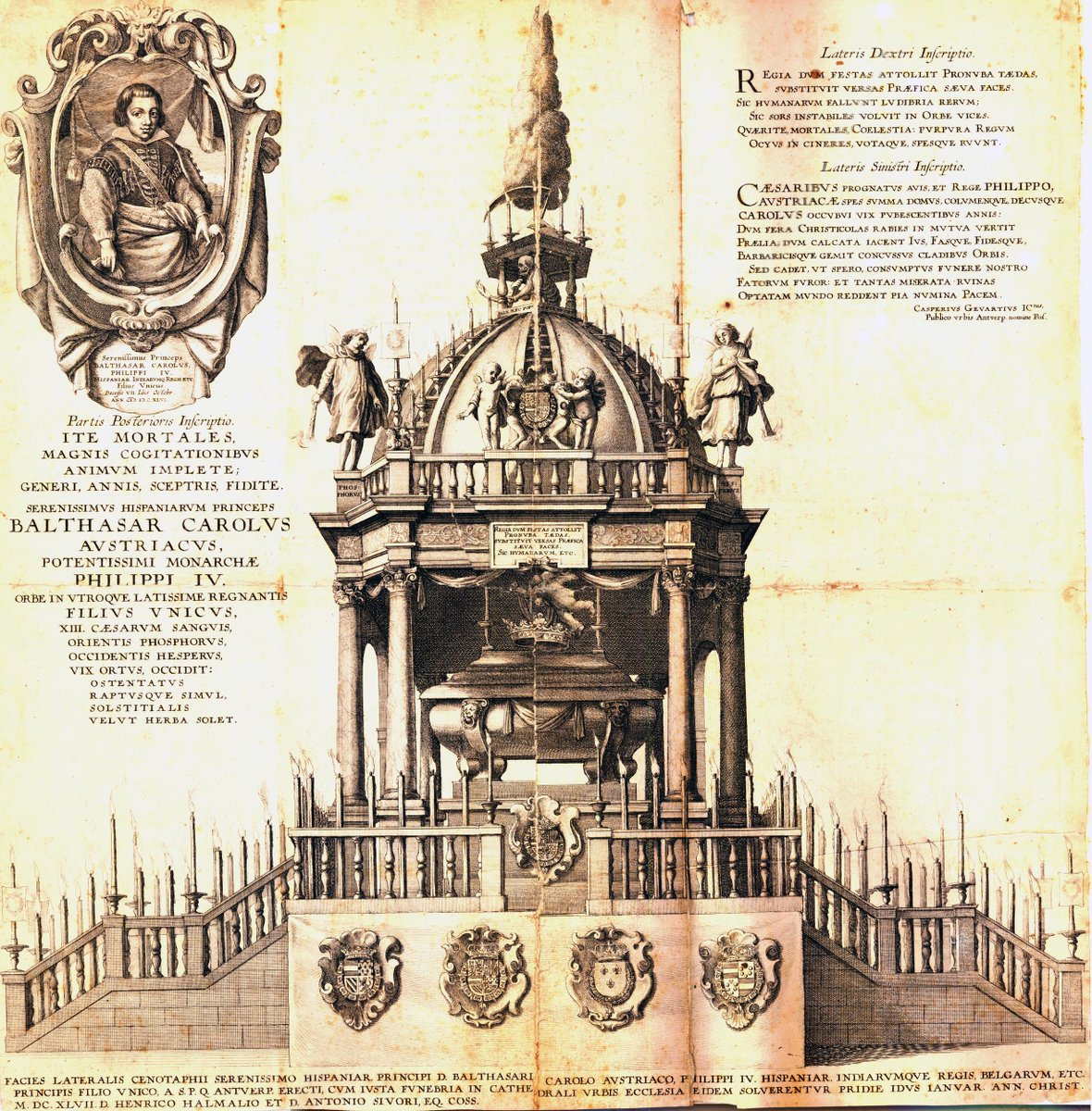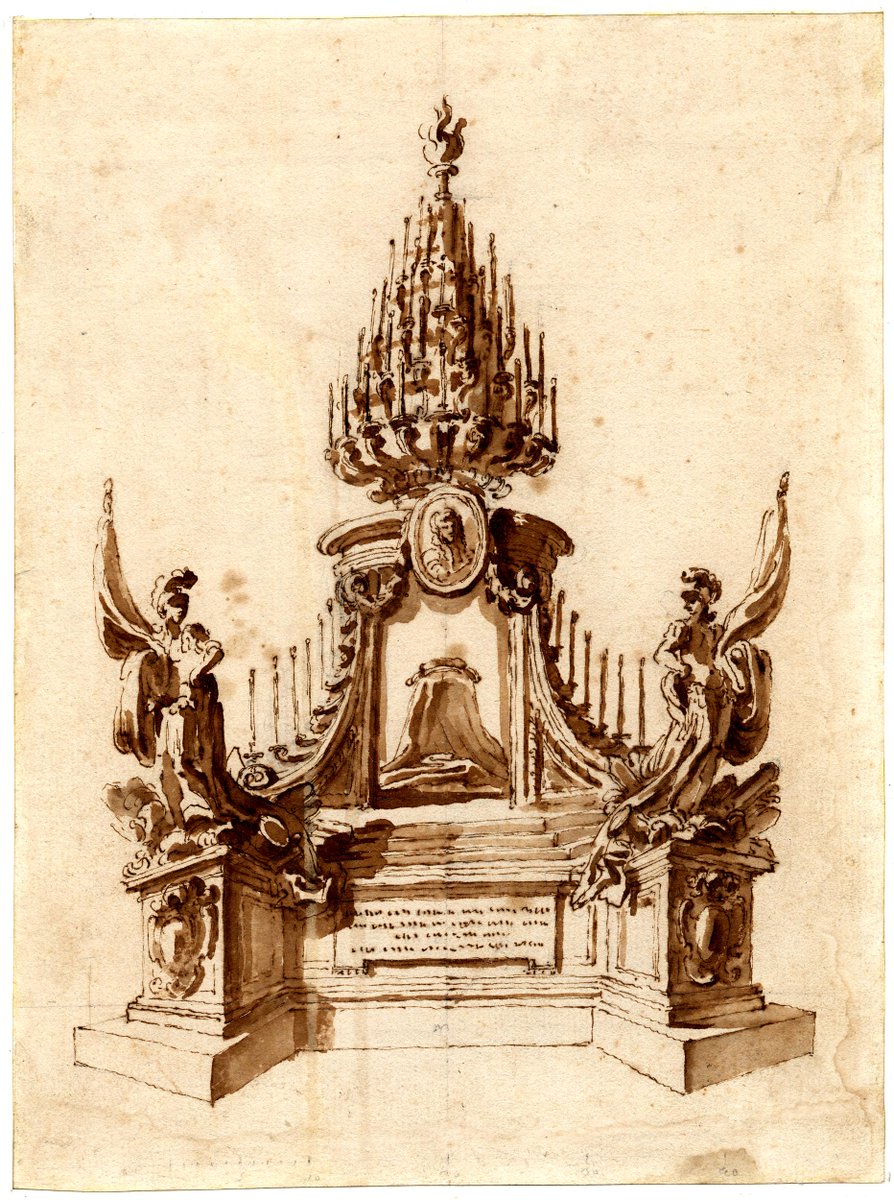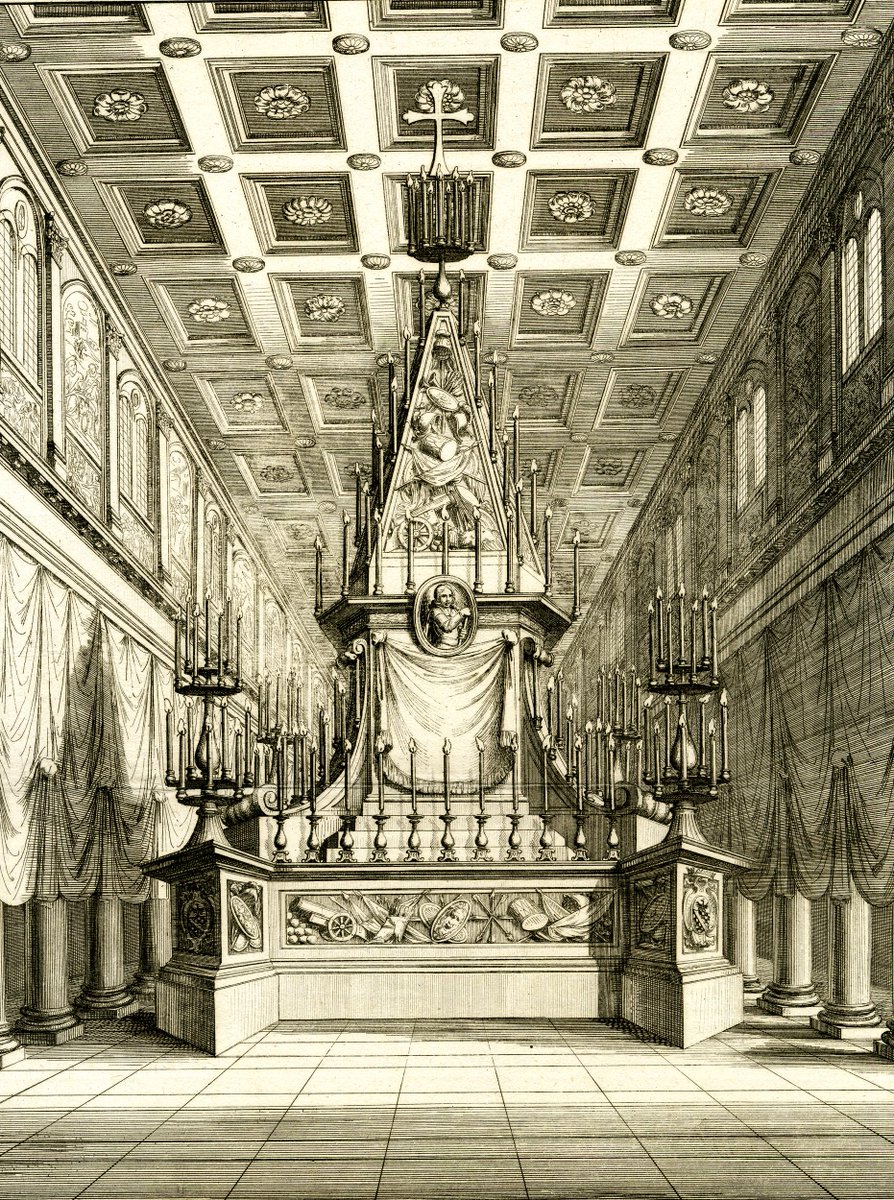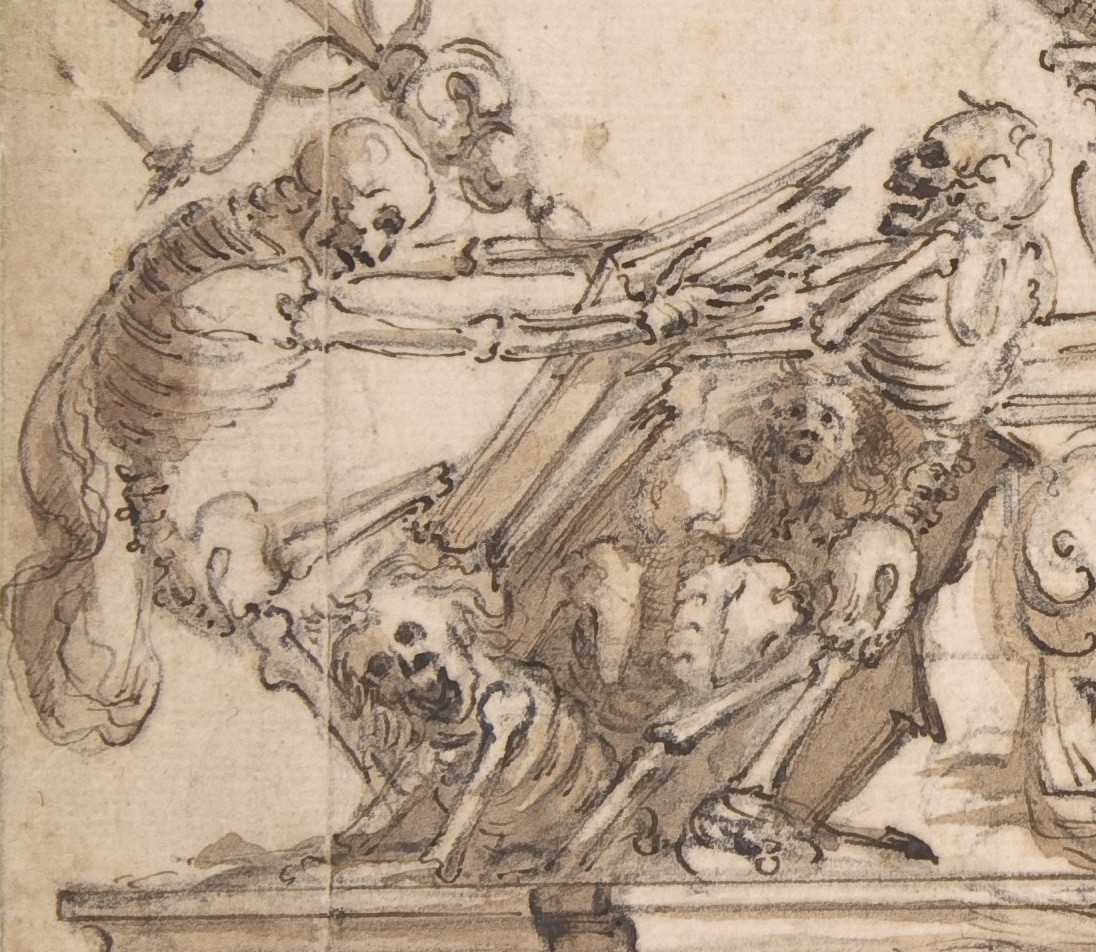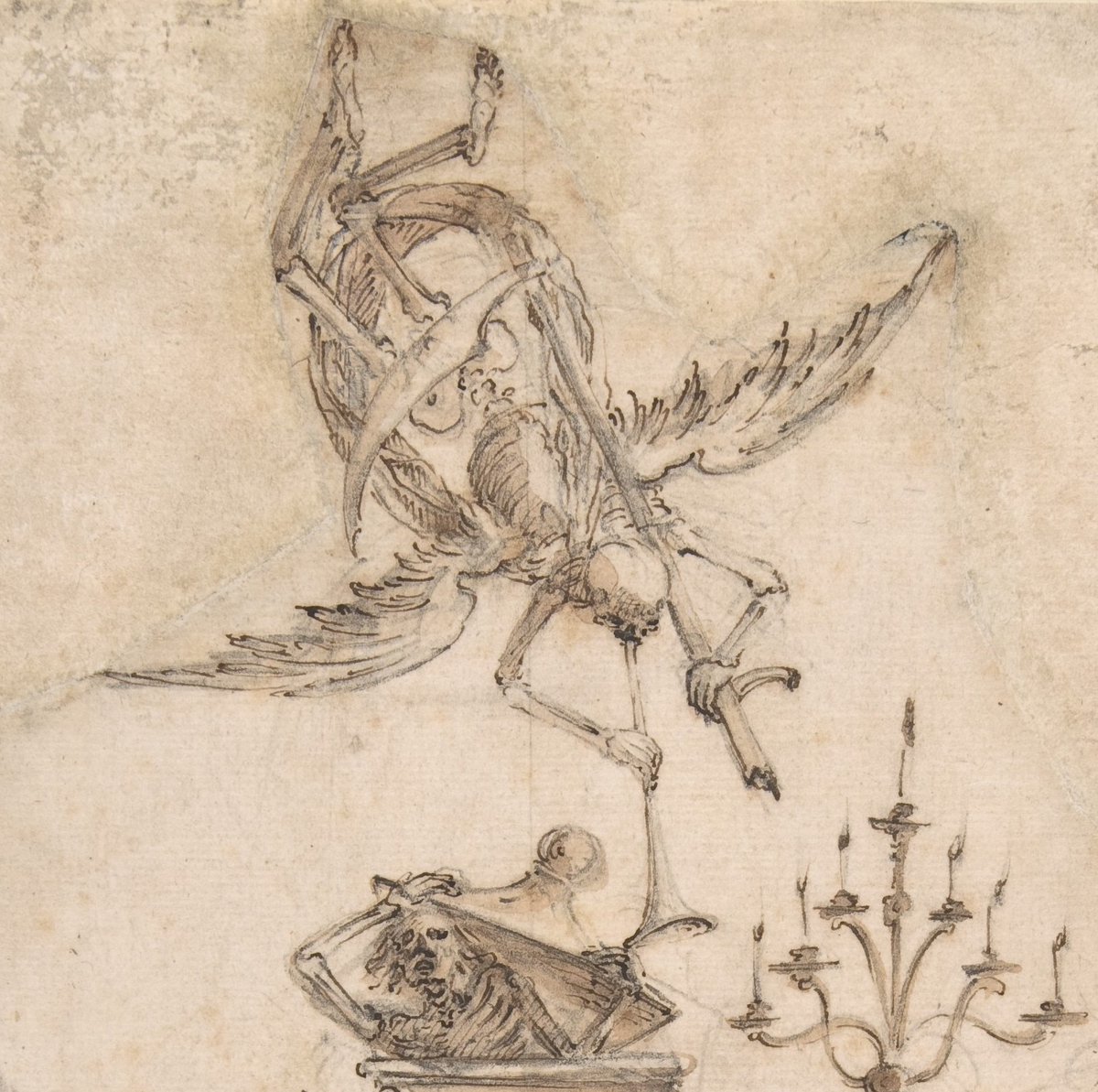¡Feliz día del #OrgulloBarroco!
I'm currently writing a chapter on exequies for Philip II, so this year's #OrgulloBarroco thread will be…catafalques!
Get ready for candles. And skeletons. Lots of candles & skeletons.
Domenico Fontana (design), Naples catafalque for Philip II.
I'm currently writing a chapter on exequies for Philip II, so this year's #OrgulloBarroco thread will be…catafalques!
Get ready for candles. And skeletons. Lots of candles & skeletons.
Domenico Fontana (design), Naples catafalque for Philip II.
Anonymous print of the catafalque for Philip II in S. Fidele, Milan, ca. 1598, @britishmuseum
(OK, so the first two images for Philip II don't have skeletons, but just wait...)
#OrgulloBarroco
(OK, so the first two images for Philip II don't have skeletons, but just wait...)
#OrgulloBarroco
After Charles V & Philip II, the Spanish Habsburgs were *really* into catafalques—and, as a consequence, their use spread to a bunch of cities in the global Spanish empire and to other cities in Europe. #OrgulloBarroco
Catafalque for Philip III in San Jerónimo, Madrid, 1621.
Catafalque for Philip III in San Jerónimo, Madrid, 1621.
(This is a massive oversimplification of the development of catafalques, funerary decorations, and exequies in the 16th century, but I'm skipping over all that for now to get to the 17th century and that century's catafalque amazingness for #OrgulloBarroco.)
Catafalques were temporary architectural structures — adorned w/ candles, sculptures, paintings, emblems — at the heart of the decorations of exequies for royals, nobles, popes, etc. As they were ephemeral, we rely on descriptions, prints, & drawings to get a sense of them.
Luckily, for some catafalques (though not as many as I would like), we have great printed depictions of the structures that were built.
Catafalque for Philip IV in Pamplona Cathedral, ca. 1665, @metmuseum
Catafalque for Philip IV in Pamplona Cathedral, ca. 1665, @metmuseum
Groups in cities around the globe erected catafalques as part of their funerary celebrations, allowing them to mark a royal death w/out the presence of an actual royal body to mourn.
Catafalque for Philip IV in Mexico City, designed by Isidro
Sariñana y Cuenca, 1666, @JCBLibrary
Catafalque for Philip IV in Mexico City, designed by Isidro
Sariñana y Cuenca, 1666, @JCBLibrary
These groups included the various Spanish Nations living in cities outside Iberia.
Nicolas Pinson, after Antonio del Grande; Catafalque for Philip IV erected by the Spanish Nation in Rome in San Giacomo degli Spagnoli on 18 December 1565; @britishmuseum
Nicolas Pinson, after Antonio del Grande; Catafalque for Philip IV erected by the Spanish Nation in Rome in San Giacomo degli Spagnoli on 18 December 1565; @britishmuseum
The Italians really hopped on board the catafalque/capella ardente train.
And I told you there'd be skeletons.
Domenico Piola & Stefano Camogli, Catafalque of Philip IV, ca. 1665, @metmuseum
#OrgulloBarroco
And I told you there'd be skeletons.

Domenico Piola & Stefano Camogli, Catafalque of Philip IV, ca. 1665, @metmuseum
#OrgulloBarroco
Skeletons *and* candles.
#OrgulloBarroco
Giovanni Battista Falda (print), after Ferdinando Tacca; Catafalque for Philip IV in San Lorenzo, Florence; 1665; @britishmuseum
#OrgulloBarroco
Giovanni Battista Falda (print), after Ferdinando Tacca; Catafalque for Philip IV in San Lorenzo, Florence; 1665; @britishmuseum
As news took a long time to travel & decorations took time to prepare, the further away from the king a city was, the more time passed between his death & their exequies.
Catafalque for Philip IV from Diego de León Pinelo's account of the exequies in Lima, 1666, @BNE_biblioteca
Catafalque for Philip IV from Diego de León Pinelo's account of the exequies in Lima, 1666, @BNE_biblioteca
Barcelona opted for allegorical figures & candles to mourn Charles II's death in 1700. But each stepped level of the catafalque has skulls & crossbones, too. #OrgulloBarroco
From José Rocaberti & José Company's description of the exequies, published 1701, @BNE_biblioteca
From José Rocaberti & José Company's description of the exequies, published 1701, @BNE_biblioteca
The day for #OrgulloBarroco may be over in Spain, but there are 7 hours left here in Chicago, so get ready for more catafalques.
After the end of the Habsburgs, the Bourbons kept up the tradition.
Catafalque for Philip V in the Encarnación in Madrid, 1748,
@BNE_biblioteca
After the end of the Habsburgs, the Bourbons kept up the tradition.
Catafalque for Philip V in the Encarnación in Madrid, 1748,
@BNE_biblioteca
Not only kings got catafalques; other members of royal families did as well. This one was for Isabel Clara Eugenia, who ruled the Spanish Netherlands (1st w/ her husband & then in her own right).
Catafalque in Sint-Jacob-op-Koudenbergkerk, Brussels, on 3 March 1634, @rijksmuseum
Catafalque in Sint-Jacob-op-Koudenbergkerk, Brussels, on 3 March 1634, @rijksmuseum
When the teenaged Baltasar Carlos died in 1646, leaving Philip IV w/out a male heir, his death was mourned throughout the Spanish territories.
Wenceslaus Hollar (print), after Erasmus Quellinus; two views of the catafalque for Baltasar Carlos in Antwerp; 1647; @britishmuseum
Wenceslaus Hollar (print), after Erasmus Quellinus; two views of the catafalque for Baltasar Carlos in Antwerp; 1647; @britishmuseum
I love the directionality of the Antwerp catafalque for Baltasar Carlos, created by the two staircases bringing people up, through, and down the structure.
And the best bit? The skeleton atop the cupola beckoning people to enter w/ a gesture of its left hand. #OrgulloBarroco
And the best bit? The skeleton atop the cupola beckoning people to enter w/ a gesture of its left hand. #OrgulloBarroco
I could add SO MANY MORE prints of catafalques—for popes & queens & dukes & emperors & professors & nobles...
But.
Let's look at some drawings for catafalques. #OrgulloBarroco
Anonymous Italian design for a catafalque for Philip IV, ca. 1665, @metmuseum
But.
Let's look at some drawings for catafalques. #OrgulloBarroco
Anonymous Italian design for a catafalque for Philip IV, ca. 1665, @metmuseum
Sometimes drawings help us get a sense of what catafalques may have looked like. But, as this drawing for & print after a 1668 #Bernini design shows, the finished product didn't always look like the drawing.
Catafalque for Muzio Mattei in S. Maria Maggiore, Rome, @britishmuseum
Catafalque for Muzio Mattei in S. Maria Maggiore, Rome, @britishmuseum
One final drawn design for a catafalque with, as promised, candles & (some truly OTT) skeletons.
Happy #OrgulloBarroco!
Anonymous Italian, ca. 1740-60, @metmuseum
Happy #OrgulloBarroco!
Anonymous Italian, ca. 1740-60, @metmuseum

 Read on Twitter
Read on Twitter